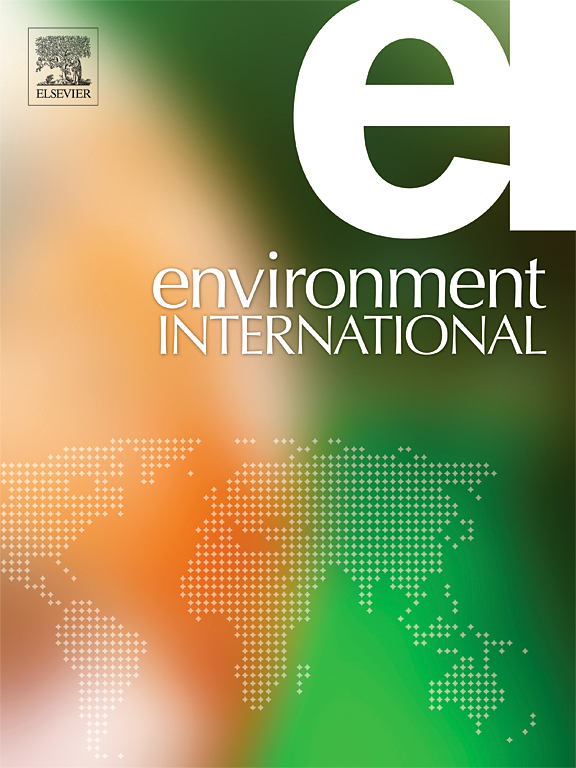Towards circular food production systems: Identification of chemical, microbial, and physical food safety hazards in municipal sludge and excess aerobic biomass of the food industry
IF 9.7
1区 环境科学与生态学
Q1 ENVIRONMENTAL SCIENCES
引用次数: 0
Abstract
There is a need in Europe to re-use residual streams to move towards a more circular food production system in the future. Sludge from both municipal wastewater (sewage) treatment plants and from wastewater treatment plants of the food industry (i.e., aerobic biomass) are present in large volumes, contain nutrients, and are currently mostly incinerated in the Netherlands. This makes them an interesting source for re-use in food production systems. However, prior to re-use of these streams in a food production system, the presence of hazardous substances (chemicals, microbiological, and physical) needs to be evaluated to safeguard food safety of such systems. This study aims to evaluate this in sewage sludge collected from multiple locations and in excess aerobic biomass from food industry plants, sampled at 2 – 4 time points. Hazards were analyzed in all samples and included pathogenic bacteria, microbial composition, antimicrobial resistance (genes), viruses, heavy metals, pharmaceutical and pesticide residues, short-chain per- and polyfluoroalkyl substances, dioxins, and physical hazards. Generally, aerobic biomass from wastewater treatment plants of the food industry contained less of the above-mentioned hazards as compared to sludge from municipal wastewater treatment plants. When available, hazard concentrations were compared with maximum limits for fertilizer applications. For heavy metals, these limits were especially exceeded by found cadmium concentrations. Overall, the results of the present study will contribute to the design of safe circular food production systems and showcase the need for a fit-for-purpose and safe-by-design approach in the application of residual streams in food production systems.


迈向循环食品生产系统:确定城市污泥和食品工业中过量的好氧生物质中的化学、微生物和物理食品安全危害
在欧洲,有必要重新利用剩余流,以便在未来朝着更循环的粮食生产系统迈进。来自城市污水(污水)处理厂和食品工业污水处理厂的污泥(即好氧生物质)大量存在,含有营养物质,目前在荷兰主要焚烧。这使它们成为食品生产系统中再利用的有趣来源。然而,在食品生产系统中重新使用这些流之前,需要评估有害物质(化学物质、微生物和物理物质)的存在,以保障这些系统的食品安全。本研究的目的是在2 - 4个时间点取样,从多个地点收集的污水污泥和食品工业工厂的过量好氧生物质中评估这一点。对所有样品的危害进行了分析,包括致病菌、微生物组成、抗菌素耐药性(基因)、病毒、重金属、药物和农药残留、短链全氟烷基和多氟烷基物质、二恶英和物理危害。一般来说,与城市污水处理厂的污泥相比,食品工业废水处理厂的好氧生物质含有较少的上述危害。在可行的情况下,将危害浓度与肥料施用的最大限度进行比较。对于重金属来说,镉的浓度尤其超过了这些限制。总的来说,本研究的结果将有助于设计安全的循环食品生产系统,并展示在食品生产系统中应用残留流时需要一种适合目的和设计安全的方法。
本文章由计算机程序翻译,如有差异,请以英文原文为准。
求助全文
约1分钟内获得全文
求助全文
来源期刊

Environment International
环境科学-环境科学
CiteScore
21.90
自引率
3.40%
发文量
734
审稿时长
2.8 months
期刊介绍:
Environmental Health publishes manuscripts focusing on critical aspects of environmental and occupational medicine, including studies in toxicology and epidemiology, to illuminate the human health implications of exposure to environmental hazards. The journal adopts an open-access model and practices open peer review.
It caters to scientists and practitioners across all environmental science domains, directly or indirectly impacting human health and well-being. With a commitment to enhancing the prevention of environmentally-related health risks, Environmental Health serves as a public health journal for the community and scientists engaged in matters of public health significance concerning the environment.
 求助内容:
求助内容: 应助结果提醒方式:
应助结果提醒方式:


